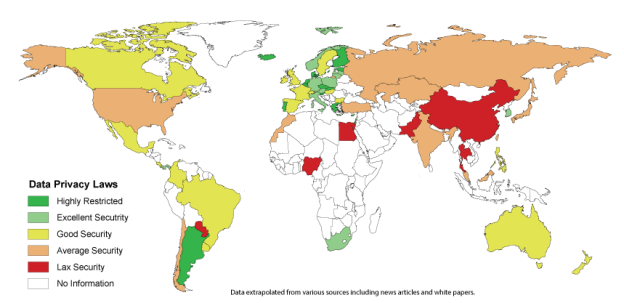
Traditionally, companies ran their own data centers, or they paid other vendors to manage racks of servers in a colocation facility that served as their computer infrastructure. A recent trend in business is the shift away from on-premise servers and infrastructures to off-site, cloud-based systems that handle all or most of a company’s computer infrastructure needs. These services can be purchased from vendors who take care of all aspects of hardware purchasing and provisioning, load balancing, firewall protection, and more.
They go by acronyms such as “PaaS” (Platform as a Service) and “IaaS” (Infrastructure as a Service), and offer small businesses a way to scale up a business without the usual IT and hardware overhead. Amazon Web Service (AWS) and Microsoft’s Azure are two of the largest players in the cloud space. Email marketing software that is designed to work with external databases, such as Goolara Symphonie, can run on these platforms, but an Email Service Provider (ESP) that keep its data separate from other input data is going to encounter problems. The PaaS/IaaS providers companies don’t want email marketing mail sent from their networks. This is understandable. To do so would provide too many opportunities for unscrupulous spammers to hide their tracks and potentially block their ability to send any emails. That doesn’t mean you can’t use Azure or AWS with your email marketing software, but you need to understand how it works, and then decide which solution is best for you.
On-Premise Meets the Cloud
Traditionally, if a company wanted to keep its data safe, it meant keeping everything in-house. This meant servers, RAIDs, and constantly monitoring for load balancing, software updates, and redundancy issues. It’s a lot to take care of, so it came as no surprise that, when afforded the opportunity, some businesses preferred to hand off these duties to third-party services. This approach really took off when Amazon introduced their Amazon Web Service (AWS). Suddenly, it was possible to forgo the high cost of a computer infrastructure and concentrate on the business’s core products and services. Enough companies joined the shift to AWS that, soon, a new acronym was born: “IaaS” (Infrastructure as a Service).
With the success of Amazon Web Services, other companies, such as Google, IBM, HP, and Rackspace soon entered the market, but the first real competition to AWS came from Microsoft with its Azure service. As of this writing, Amazon Web Services (AWS) and Microsoft Azure are neck-and-neck as the two top providers of cloud-based Infrastructures and Platforms by a wide margin. With its Microsoft pedigree, Azure has gained ground on Amazon, especially with companies that already use Microsoft products.
Email Marketing and Cloud-Computing
So can AWS and Azure integrate with email marketing software? Well, maybe. It will depend on your email marketing solution. Goolara Symphonie can do it because it allows you to use subscriber data from your own database. Many companies—especially those that offer “free” services—send their email marketing from within their own system, and this can be a problem when you try and shift your infrastructure to the cloud. Azure won’t let you send mass emails directly from within it, and AWS wants to funnel everything through its SES (Simple Email System). So what are these companies to do with their email marketing when they migrate their computer infrastructure to the cloud? Suddenly, you are playing on someone else’s field, and you’ll have to play by their rules.
If you are already using an ESP that doesn’t offer data integration, this might not matter to you, but if you use any type of CRM integration, you’ll find things get more complicated when you move your infrastructure to the cloud. This isn’t a problem if your ESP (such as Goolara) is designed for data integration, but it could result in problems with those ESPs that like to keep all the subscriber data local to their own records.
On-Premise and Cloud Computing
So what about using an on-premise email marketing solution with Azure or AWS? On first glance, this may sound like a contradiction in terms, but we’re starting to see IaaS/PaaS used with on-premise systems as part of a hybrid solution. Properly configured, this approach combines the advantages of a cloud-based infrastructure, while maintaining the data security and integrity you’ve come to expect from an on-premise system. The email system can pull the data from the servers in the cloud and send the mailings outside of Azure. Setting up this hybrid infrastructure is quite easy, and gives the advantage of all data being hosted in the customer’s cloud, with the sending actions handled by the ESP’s infrastructure. The customer remains in control of the data, and can directly read or modify the data in their database, which are some of the key advantages of an on-premise deployment.
International Issues
One area that has not received much discussion is the thorny problem of national boundaries. With the advent of cloud-based infrastructures, the question of where your data resides might become critical. This won’t matter much if you are located in America, but recent European legislation could have an impact on your choice to move to a cloud-based platform. On the plus side, we doubt that even the people who drafted the legislation are aware of the potential issues of borders with a cloud-based system. Right now, there are no signs that any court cases are planning to deal with the question.
Moving your Infrastructure to the cloud is not a task to take on lightly. Whether you choose AWS, Azure, or some other Infrastructure/Platform as a Service, you’ll still need to set up your email marketing software to work with it. This means working closely with your ESP to ensure that everything is compatible. Already, we’re seeing companies spring up for the express purpose of helping other companies make their transition to the cloud. Every situation is bound to be slightly different. There is no simple plug-and-play solution that will work for everyone. If you are a Goolara Symphonie user, or you are interested in moving your company’s infrastructure to an IaaS, feel free to contact us to learn more about how you can integrate your cloud-based database directly with Symphonie for a great hybrid approach of cloud infrastructures.





